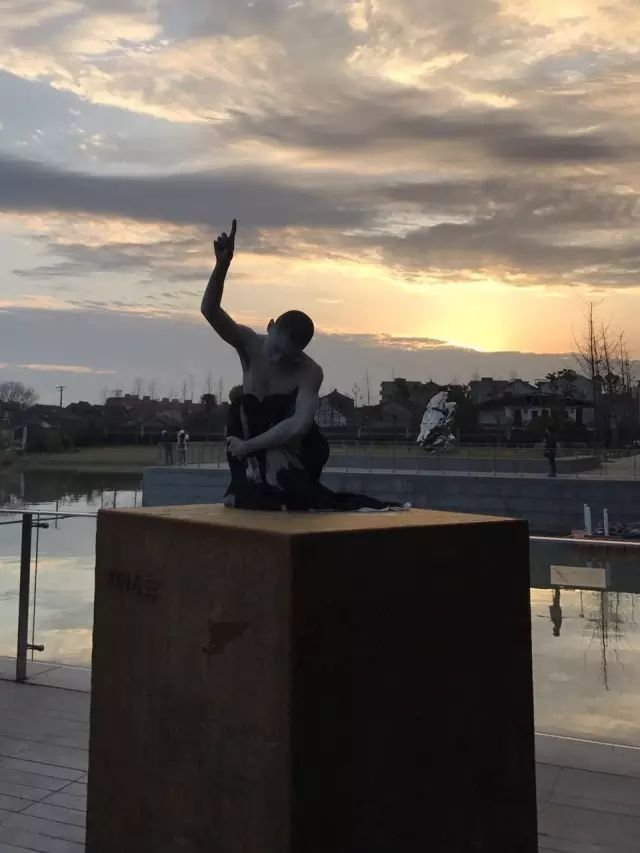十年公共艺术计划|偏离17.5度
OCAT Shanghai Pujiang Exhibiton Site| From 17.5 degree
逝者如斯,不舍昼夜。《偏离17.5度》作品在上海浦江华侨城展开的十年,不仅是由黄专先生为前“十年公共艺术计划”打下深厚学术基础的十年,也是这件作品本身见证世事变迁与生命流转的十年。本次落成仪式,《偏离17.5度》第十一件作品落成成为了“生长力公共艺术计划”的起点。第十一件作品将会再次深入到居民生活空间之中,在日常生活之中构造起一个公共时间的新起点,在事件中让艺术家、观众与居民结成一个时间的共同体。
作品《偏离17.5度》构思于艺术家1989年一次偶然的明十三陵之行,“文革”中被砸碎而后又被用水泥和胶拼合起来的古代石碑,不仅成为艺术家早期最有力的作品的创作源泉,更引发了艺术家“年度纪念碑”计划(1992)的想法,也便是《偏离17.5度》的概念原型。然而直到2007年该想法才在上海华侨城《新浦江城公共艺术计划》中得以实现。
为了符合浦东的道路系统,上海华侨城的房屋布局朝向偏东南17.5度。与其作为对比,艺术家设计的正南正北的矩阵来自于中国传统城镇的布局方式。矩阵里的每一个格子的交叉点纵横相隔195m,一共有42个预留点。艺术家每年选定其中的一个点植入一个长宽各1.2m铁锈色铸铁方柱,最终在城区中形成等高的网状方柱矩阵。作品的完成步骤,以作者的生命延续周期为准,植入点的数量随着年数增加。生命结束的当年即为作品的最终完成,总体坐标系统中如有未及树立的坐标点,即以空位的形式显示在作品的虚拟部分。
这些立方体的落点具有各种各样的可能性。它会落在业主的屋子里面,也会进入一些酒店大堂或者超市空间,也可能会在河道里面。留给未来的是诸多的未知数和无数的谈判过程。柱子的存在没有任何侵略性或进攻性,只是呈现不断生长的状态,勾勒出了自然的秩序——地球的南北磁极和人的生老病死,在打破的时间节奏中告知人们生命周期的存在。
The passage of time is like this, never giving up day and night. The ten years that the work "Deviation from 17.5 Degrees" was launched in Shanghai Pujiang Overseas Chinese Town were not only a decade in which Mr. Huang Zhuan laid a solid academic foundation for the previous "Ten Year Public Art Plan", but also a decade in which the work itself witnessed the changes of the world and the flow of life. The completion ceremony of the eleventh work of "Deviation from 17.5 Degrees" has become the starting point of the "Growth Power Public Art Project". The eleventh work will once again delve into the living spaces of residents, constructing a new starting point for public time in daily life, and allowing artists, audiences, and residents to form a community of time through events.
The work "Deviation from 17.5 Degrees" was conceived during the artist's accidental visit to the Ming Thirteen Tombs in 1989. The ancient stone tablet, which was smashed during the Cultural Revolution and then pieced together with cement and glue, not only became the artist's most powerful source of early works, but also sparked the idea of the artist's "Annual Monument" plan (1992), which is the conceptual prototype of "Deviation from 17.5 Degrees". However, it was not until 2007 that this idea was realized in the "Xinpu Jiangcheng Public Art Plan" of Shanghai Overseas Chinese Town.
In order to comply with the road system of Pudong, the layout of houses in Shanghai Overseas Chinese Town is oriented towards the southeast at an angle of 17.5 degrees. As a contrast, the artist's design of a north-south matrix comes from the layout of traditional Chinese towns. The intersection points of each grid in the matrix are spaced 195m apart vertically and horizontally, with a total of 42 reserved points. The artist selects one of the points each year to implant a 1.2m long and wide rust colored cast iron square column, ultimately forming a grid like square column matrix of equal height in the urban area. The completion steps of the work are based on the author's life cycle, and the number of implantation points increases with the number of years. The year when one's life ends is considered the final completion of the work, and any coordinate points in the overall coordinate system that have not been established are displayed in the virtual part of the work in the form of empty spaces.
The landing points of these cubes have various possibilities. It will land in the owner's house, enter some hotel lobbies or supermarket spaces, and may also be in the river. What is left for the future are many unknowns and countless negotiation processes. The existence of pillars is not aggressive or aggressive, but rather presents a constantly growing state, outlining the natural order - the north-south magnetic poles of the Earth and the birth, aging, sickness, and death of humans, informing people of the existence of the life cycle in a broken time rhythm.



